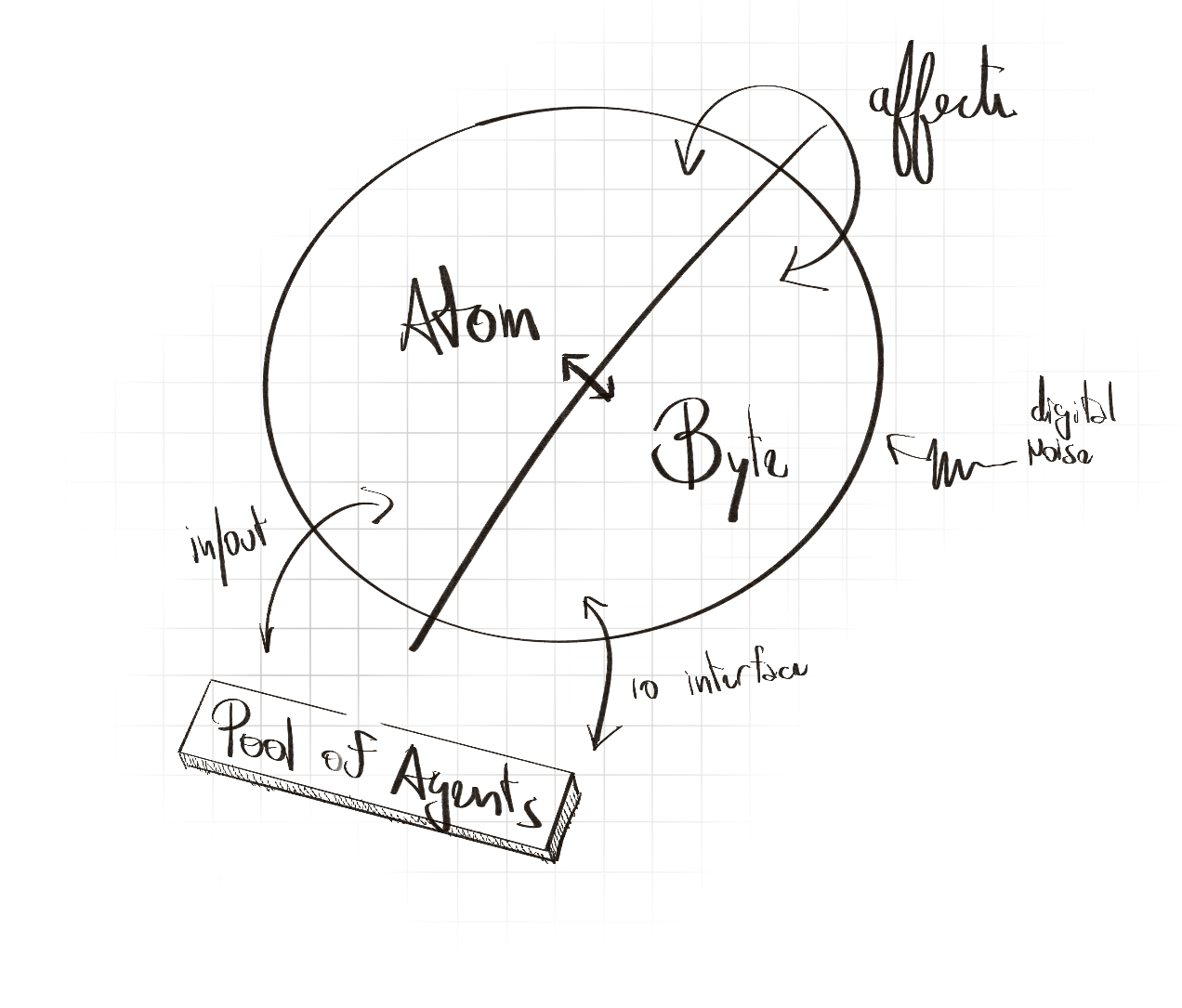Perpetual Changing Space
Let’s imagine a space, a wall-covered area of \(N\) square meters. We split this space into two pieces: a real piece and a digital piece.
For the sake of this discussion, we will consider the byte-world as non-real, and from there, a real piece consisting mostly of atoms.

Let’s redefine this concept with a clearer approach:
A byte-world and a real-world.
Every time I mention “space,” I’m referring to a real-world physical location. Every time I mention “place,” I’m referring to both.
Now, \(t\) starts at zero, giving users the ability to start living inside this place.
Imagine two devices—abstract interfaces for this exercise—that allow you to communicate between these two worlds.
One control, placed in the real-world, allows you to manage and manipulate bytes, while another control, placed in the byte-world, allows you to manipulate atoms in the real-world.
A two-way binding exists between the time we are living now and the ticks we experience while we are at the computer.
Now, imagine two agents appear, one in the byte-world and the other in the real-world.
These two agents can interact with \(Y\) devices, whatever the creator of the space defines. These could be time-constrained tools, light-control manipulation techniques, and more.
After \(t\), both players will be kicked out of the world, placing a bet on other characters inside this place to kick them out. If you are in the byte-world, someone can block you, stop your movements, and more. On the opposite side, if you are part of the real-world, players in the byte-world can do things to make you go away.
The objective of the place is to exist as long as it can. There are no other rules. The place needs to always be a byte-real intertwined space, and whenever this breaks apart, the place will no longer be a perpetually changing space.
\(t\) is a measure of time (and ticks) in both the real-world and the byte–world.
\(t\) will only accumulate, and we cannot remove or destroy anything that other agents have placed in the space. Only agents in byte-world can manipulate ticks.
Users can collaborate across the entire place to approach future users or even future versions of themselves.
A user can place any \(Y\) device inside the real-world, but cannot remove \(Y\).
This experiment will continue as long as the first and only rule does not break. The experiment should always accumulate experiences across time and ticks.
Now, a final and inconclusive question: Will these two worlds merge at any time?